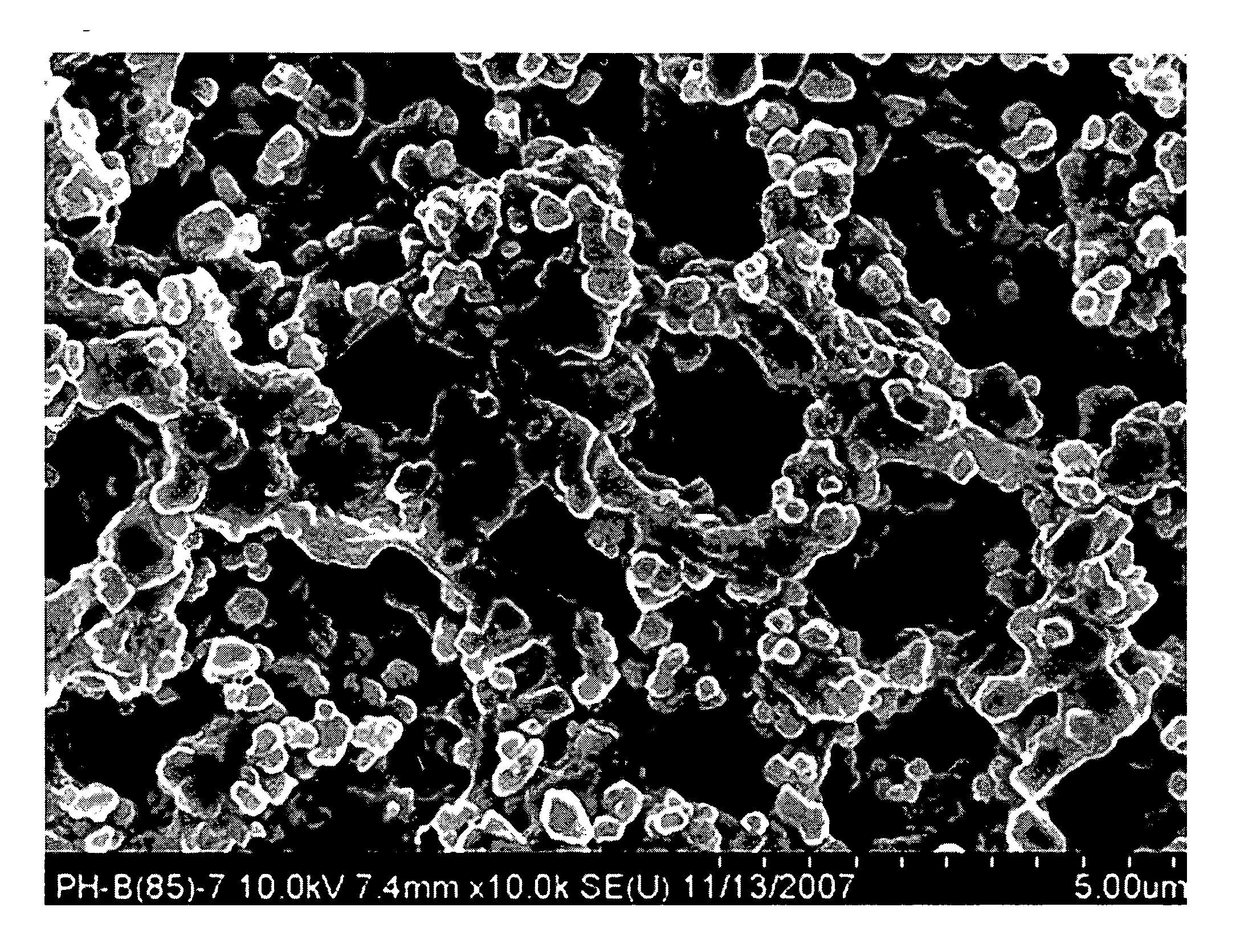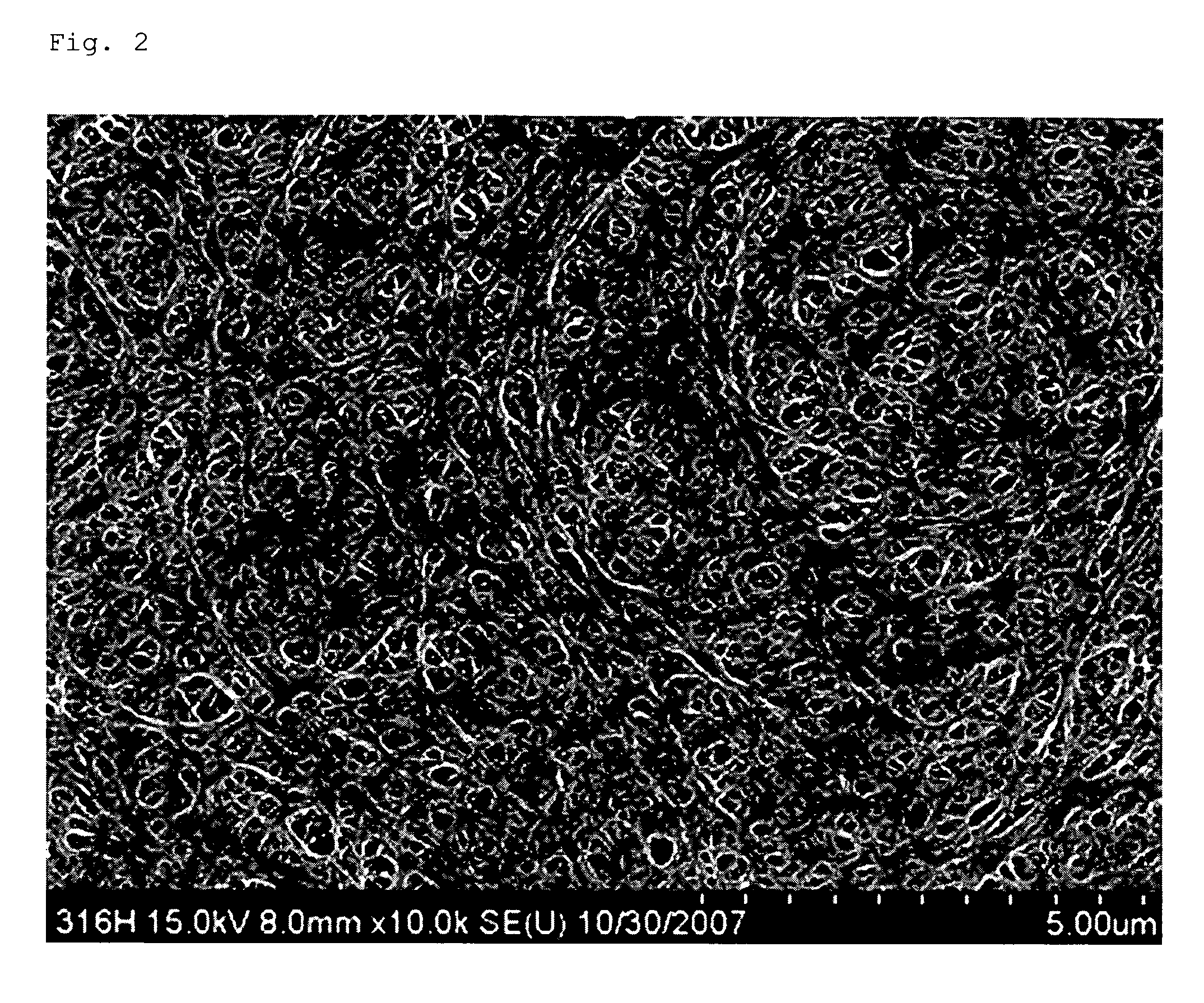Microporous polyolefin composite film with a thermally stable porous layer at high temperature
a composite film and porous layer technology, applied in the field of microporous polyolefin composite films, can solve the problems of battery overheating or igniting, electric short between electrodes, and battery generation heat, and achieve excellent permeability, high thermal stability, and excellent coating layer stability
- Summary
- Abstract
- Description
- Claims
- Application Information
AI Technical Summary
Benefits of technology
Problems solved by technology
Method used
Image
Examples
example 1
[0101]In order to prepare the polyolefin microporous film, high density polyethylene having a weight average molecular weight of 3.8×105 is used, and a mixture in which dibutyl phthalate and paraffin oil (kinematic viscosity at 40° C.: 160 cSt) is mixed at a rate of 1:2 is used as a diluent, and each content of the polyethylene and the diluent is 30 wt % and 70 wt %, respectively.
[0102]This composition is extruded at a temperature of 240° C. using a dual-axial compounder having a T-die, and passed through an area, of which temperature is set to 180° C., so as to induce a phase separation, and then a sheet is prepared using a casting roll. The sheet is prepared by a successive bi-axial stretching method in which a stretching rate is six times in each of a MD and a TD, and a stretching temperature is 121° C. Herein, a heat-setting temperature is 128° C., and a heat-setting width is 1-1.2-1.1. A final film has a thickness of 16 μm and a gas permeability of 3.5×10−5 Darcy. A solution fo...
example 2
[0103]The same the polyolefin microporous film as in the example 1 is used, and the solution for forming the polymer coating layer is prepared by dissolving polyarylate (PAR) having a glass transition temperature of 201° C. in THF solvent and also adding alumina (Al2O3, average particle size of 400 nm) and nonsolvent of pentanol. In the composition of the solution, resin / particle / solvent / nonsolvent is 4 / 8 / 82 / 6 wt %. One surface is coated by the bar coating method, and then the coated film is dried in an oven of 60° C. for 30 minutes.
[0104]A photograph of a scanning electron microscope showing a surface of the manufacture microporous polyolefin composite film is illustrated in FIG. 1.
example 3
[0105]The same the polyolefin microporous film as in the example 1 is used, and the solution for forming the polymer coating layer is prepared by dissolving polycarbonate (PC) having a melting temperature of 231° C. in THF solvent and also adding nonsolvent of pentanol and silica (SiO2, average particle size of 400 nm) which is surface-treated with 3-methacryloxypropyltrimethoxysilane (γ-MPS). In the composition of the solution, resin / particle / solvent / nonsolvent is 4 / 8 / 82 / 6 wt %. One surface is coated by the bar coating method, and then the coated film is dried in an oven of 60° C. for 30 minutes.
PUM
| Property | Measurement | Unit |
|---|---|---|
| temperature | aaaaa | aaaaa |
| temperature | aaaaa | aaaaa |
| glass transition temperature | aaaaa | aaaaa |
Abstract
Description
Claims
Application Information
 Login to View More
Login to View More - R&D
- Intellectual Property
- Life Sciences
- Materials
- Tech Scout
- Unparalleled Data Quality
- Higher Quality Content
- 60% Fewer Hallucinations
Browse by: Latest US Patents, China's latest patents, Technical Efficacy Thesaurus, Application Domain, Technology Topic, Popular Technical Reports.
© 2025 PatSnap. All rights reserved.Legal|Privacy policy|Modern Slavery Act Transparency Statement|Sitemap|About US| Contact US: help@patsnap.com



